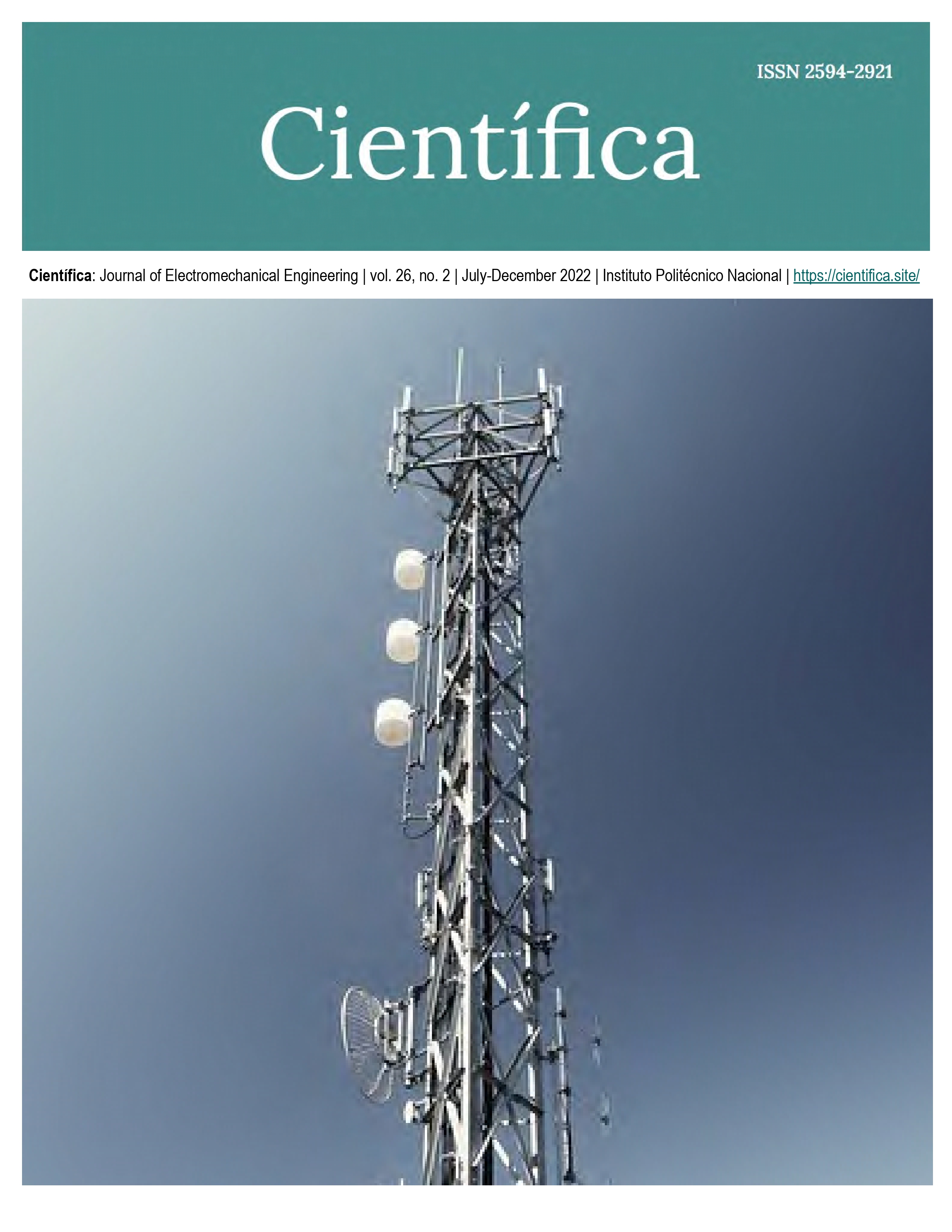Physiochemical Treatment of Residual Water from the Cromatization Process
DOI:
https://doi.org/10.46842/ipn.cien.v26n2a10Keywords:
waste water, Chromium VI, sodium metabisulfiteAbstract
The problem of environmental pollution brings with it problems that affect the development of all living beings, such as plants, animals, including man [1]. Water is one of the main natural resources that are affected by industrial activity, since many industrial processes depend on it for the production of products or it is used as an auxiliary service, essential in unitary operations, for which it must be established procedures for water treatment that help conserve its nature and preservation for future generations [1]. The concern about environmental pollution has promoted the research and development of sustainable technologies, as well as increasingly strict regulations so that industrial processes through clean technologies can reduce the levels of pollutants in effluents. In most companies, wastewater with concentrations of polluting substances is generated, due to the fact that treatment methods are economically unfeasible and have low effectiveness. In industry, chrome is used in: tanning processes, textile pigments, alloys, catalysts, anticorrosive agents, batteries, fungicides, metallic coatings, electro galvanizing, etc. The objective of this study was to establish the methodology for the reduction of Chromium VI to Chromium III in wastewater, as well as its control to comply with the parameters established in the NOM-001-SEMARNAT-1996 Standard [22]. The results obtained after treatment were from 0.059 to 0.99mg/L of chromium III. It is concluded that the treatment with sodium metabisulfite is a good option for the reduction of chromium. The relevance of this study is that the water can be reused for irrigating green areas.
References
M. N. A. Al-Azzawi, S. M. Shartooh, S. Al-Hiyaly, “The Removal of Zinc, Chromium and Nickel from Industerial Waste-Water Using Banana Peels”, Iraqi Journal of Science, pp. 72-81, 2013.
Asamblea Nacional, “Decreto Ejecutivo N°. 21-2017”, en La Gaceta, Diario Oficial, p. 48, 2017.
B. Volesky, Z. R. Holant, “Biosorption of Heavy Metals”, Biotechnol. Prog., no. 11, pp. 235-250, 1995.
J. Guertin, Toxicity and Health Effects of Chromium (All Oxidation States). Chromium (VI) Handbook, pp. 215-234, 2004.
OSHA, Hexavalent Chromium, Washington, 2009.
EPA, Chromium Compounds, 2000, https://www.epa.gov/sites/production/files/2016-09/documents/chromium-compounds.pdf
M. Aguilar, et al., “Remoción de plomo de soluciones acuosas por titanato de potasio dopado con sílice”, Rev. Int. Contam. Ambient, vol.25, no. 3, pp.125-132, 2009.
B. Atkinson, F. Bux, H. Kasan, Considerations for Application of Biosorption Technology to Remediate Metal-Contaminated Industrial Effluents, Water SA, pp. 129-135, 1998.
S. Kamsonlian, S. Suresh, C. Majumder, S. Chand, “Characterization of Banana and Orange Peels: Biosorption Mechanism”, International Journal of Science Technology & Management, pp. 1-7, 2011.
Z. Abbasi, M. Alikarami, E. Nezhad, F. Moradi, V. Moradi, “Adsorptive Removal of Co2+ and Ni2+ by Peels of Banana from Aqueous Solution”, Universal Journal of Chemistry, 90-95, 2003.
APHA, AWWA, WEF. “Standard Methods for the Examination of Water and Wastewater”, En 3500-Cr B. Colorimetric Method (pp. 69-70). Washington: American Public Health Association, 2012.
A. Ashraf, S.,Khalid, M. Fazal, “Removal of chromium (VI) from aqueous medium using chemically modified banana peels as efficient low-cost adsorbent”, Elsevier, pp. 1-10, 2016.
B. Meroufel, O. Benali, M. Benyahia, “Adsorptive removal of anionic dye from aqueous solutions by Algeriankaolin: Characteristics, isotherm, kinetic and thermodynamic studies”, J. Mater. Environ. Sci., pp. 482-491, 2013.
P. Deshmukh, G. Khadse, V. Shinde, P. Labhasetwar, “Cadmium Removal from Aqueous Solutions Using Dried Banana Peels as An Adsorbent: Kinetics and Equilibrium Modeling”, Journal of Bioremediation & Biodegradation, no. 8, pp. 395, 2017.
M. Díaz, R. Contreras, M. Guardiola, C. Mayo del Río, “Kinetic study of absorption of chromium (VI) using Canary Bananas Peels in contaminated water”, International Journal of Innovation and Scientific Research, pp. 139-145, 2017.
M. Kumar, C. Majumder, “Bio-absorptive Removal of Cr (VI) from Stimulated Tannery Waste Water using Different Adsorbents and Compare with GAC” Krishi Sanskriti, pp. 73-86, 2014.
M. Romero-Sevilla, S. Sánchez-Cuadra, M. Benavente Silva, “Aplicación de Quitosano modificado en el tratamiento de aguas residuales de tenerías”, Nexo Revista Científica, pp. 104-119, 2018.
J. Memon, S. Memon, M. Bhanger, M. Khuhawar, “Banana Peel: A Green and Economical Sorbent for Cr(III) Removal”, Pak. J. Anal. Environ. Chem., pp. 20-25, 2009.
M. Rege, J. Petersen, D. Johnstone, C. Turik, D. Yonge, W. Apel, “Bacterial reduction of hexavalent chromium by Enterobacter cloacae strain HO1 grown on sucrose”, Biotechnology Letters, vol. 19, no. 7, pp. 691-694, 1997.
F. Rosales-Ayala, D. Rovira-Quezada, R. Campos-Rodríguez, “Calidad de las aguas residuales de tipo especial en la ciudad La Libertad, El Salvador”, Tecnología en Marcha, vol. 32, no. 3, pp. 135-145, Jul.-Sep., 2019. doi: https://doi.org/10.18845/tm.v32i3.4504
L. Torres, J. Cárdenas, M. Moctezuma, V. Martínez, I. Acosta, “Remoción de cromo hexavante por la cáscara de plántano (Musa cavendishii)”, Química Hoy, Chemestry Sciences, pp. 29-32, 2012.
SEMARNAT, NOM-001-SEMARNAT-1996, 1996.
Downloads
Published
Issue
Section
License
Copyright (c) 2022 Instituto Politecnico Nacional

This work is licensed under a Creative Commons Attribution-NonCommercial-ShareAlike 4.0 International License.

